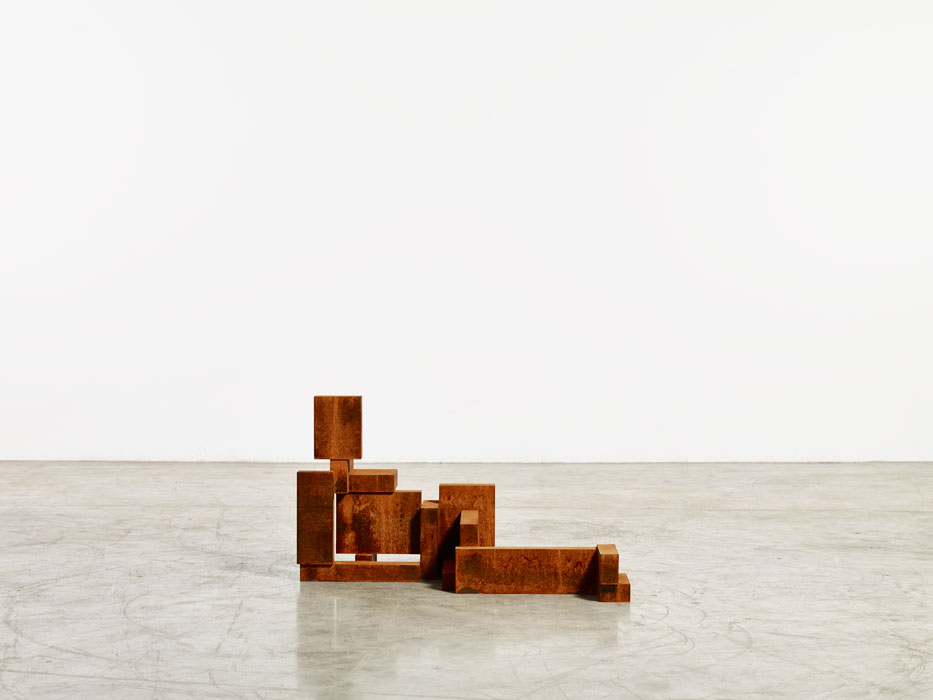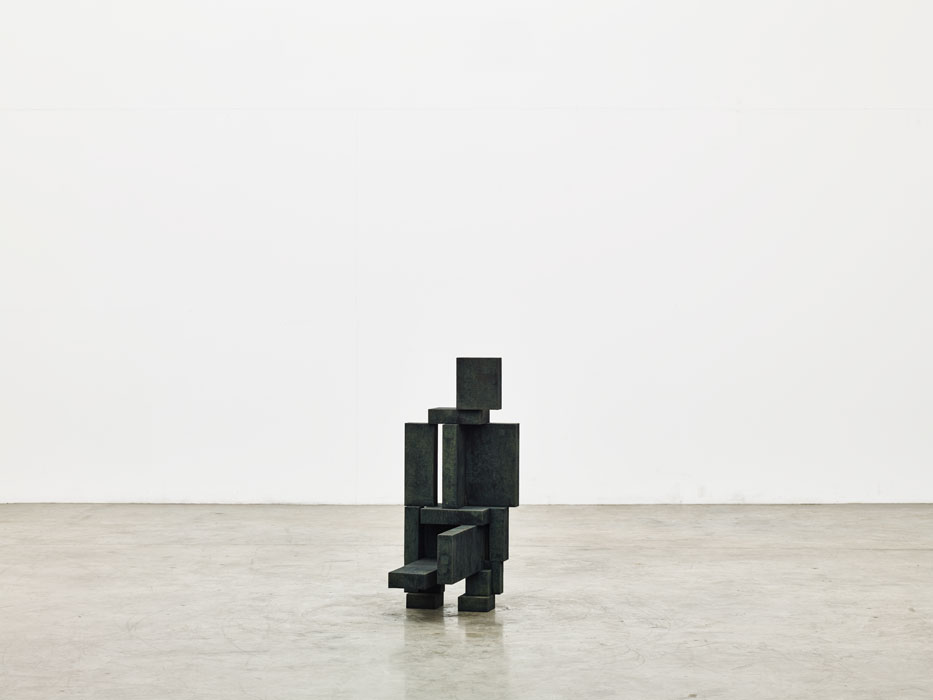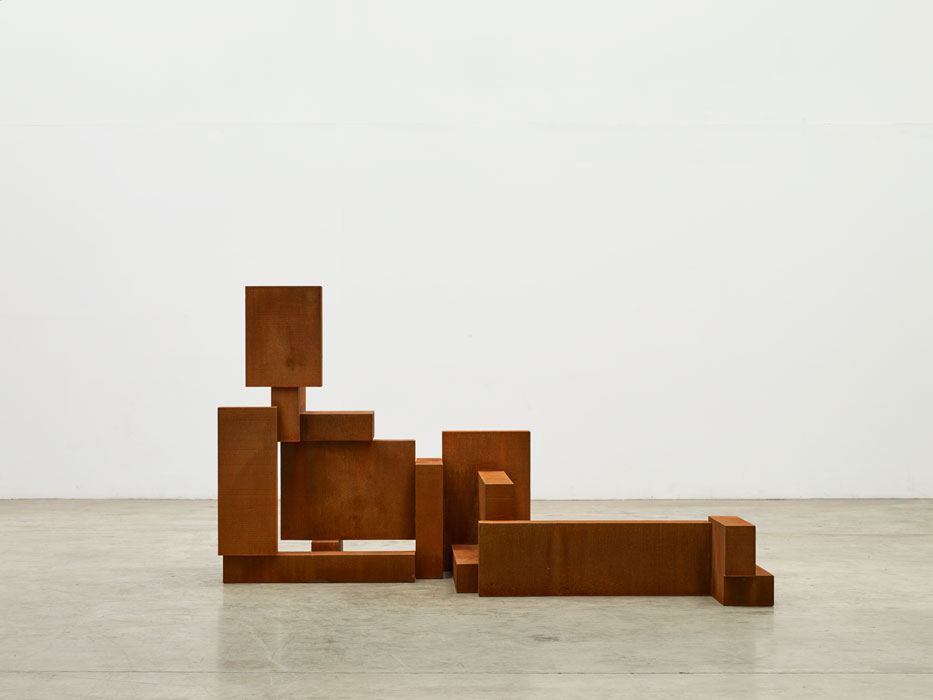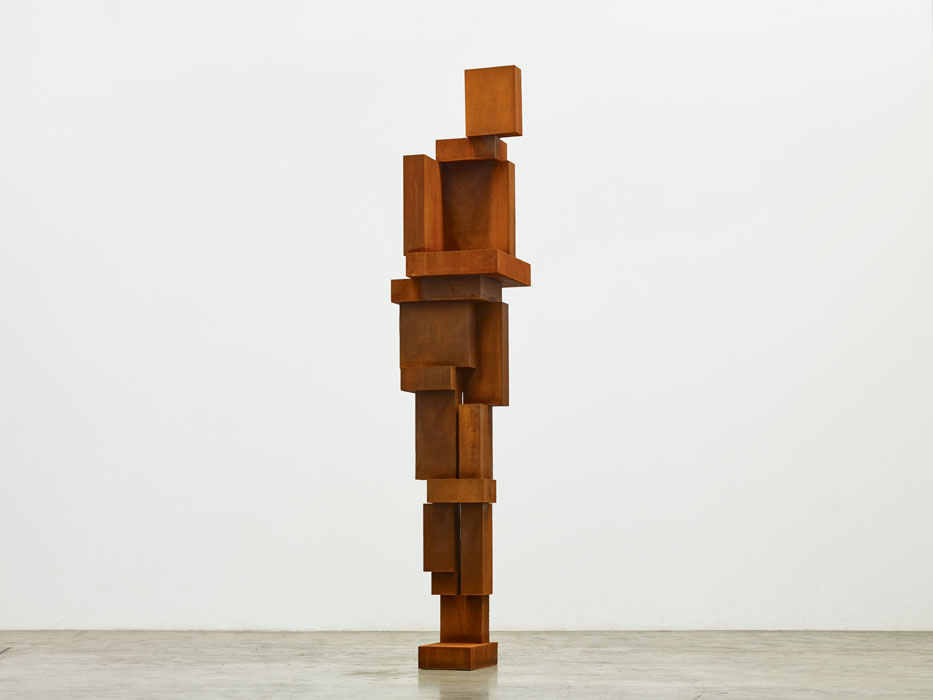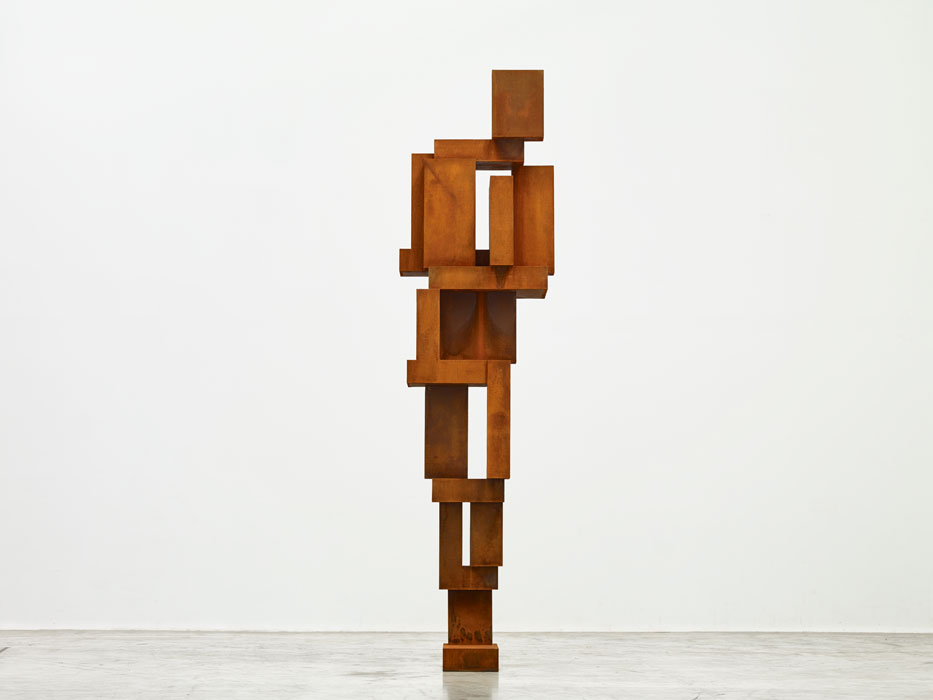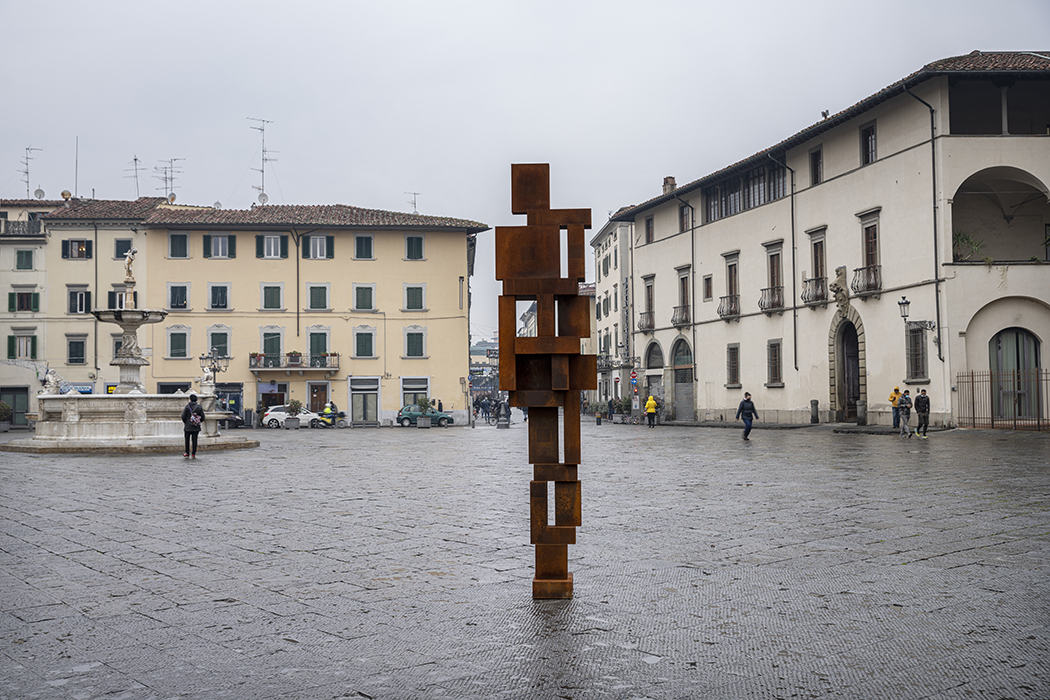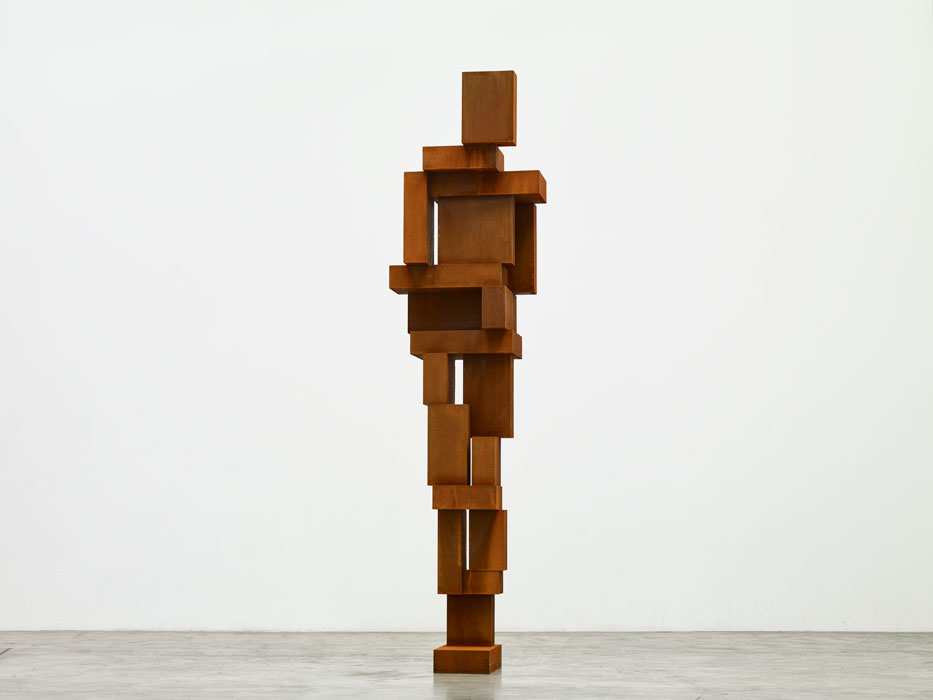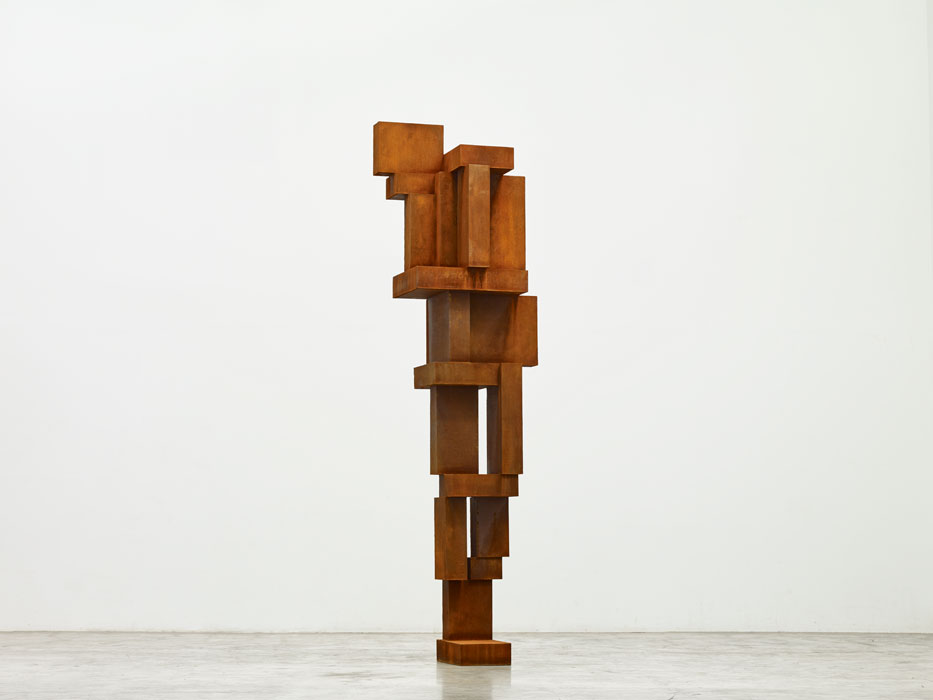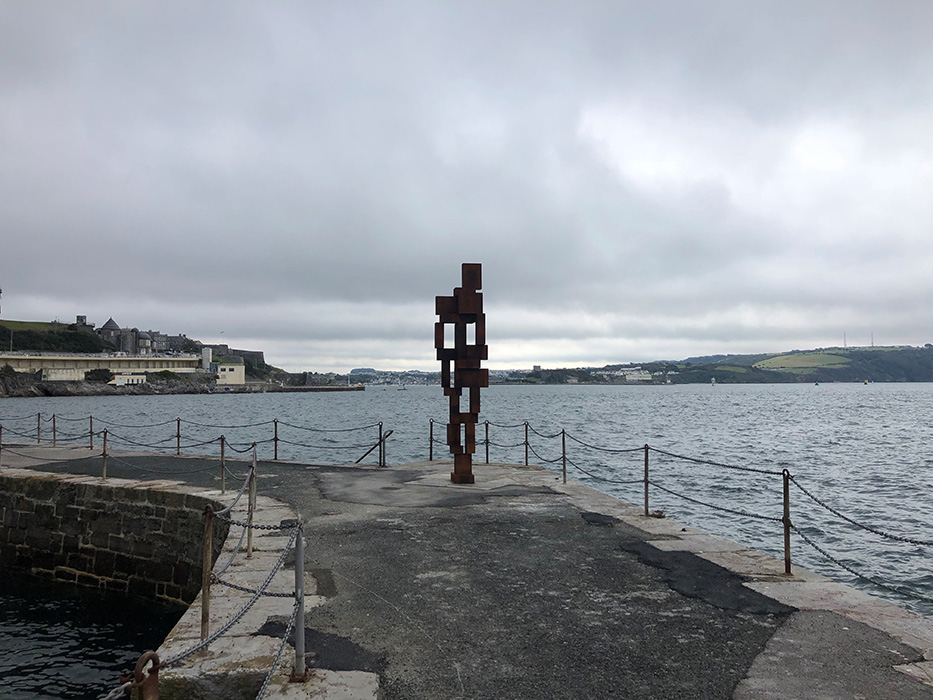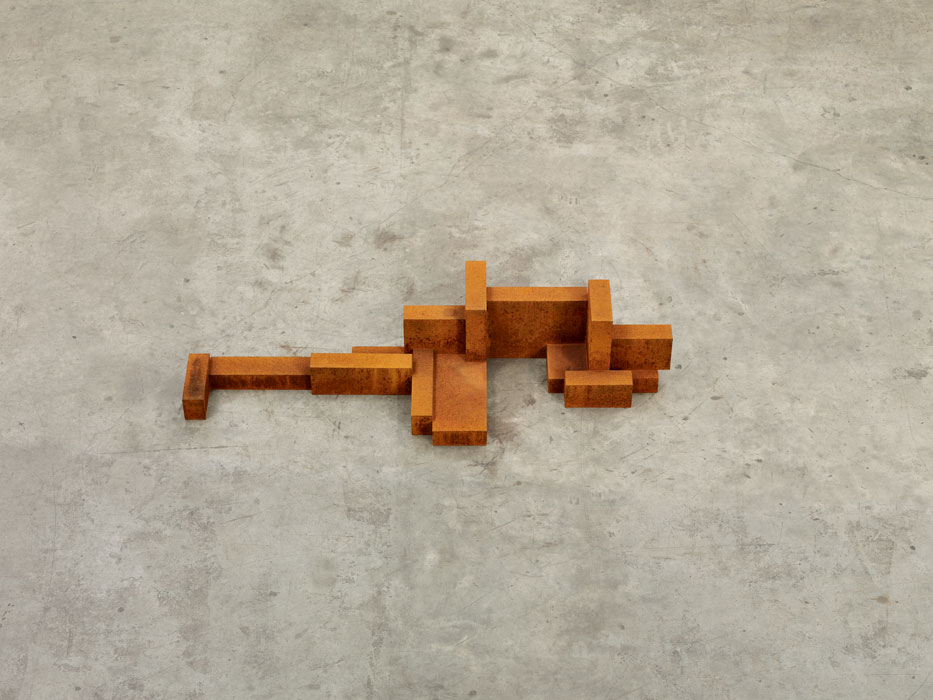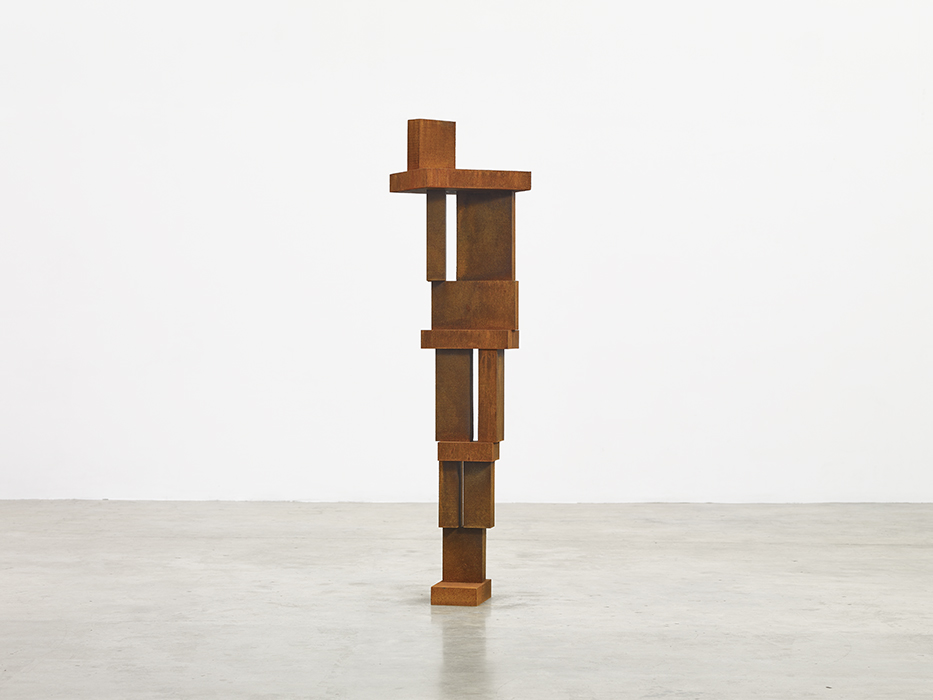After the evolution of the work into the MASSIVE BLOCKWORKS, I wanted to confound their size by making the works as precarious as possible. On the one hand making a kind of 'house of cards' that replicates the fragility of a temporary balanced structure, while on the other, referencing the three stone arches of Stonehenge or other megalithic structures.
The first SLABWORKS were made in response to a commission for seven works for Pilane, an early burial site on the Baltic Sea in Southern Sweden, with open heathland and views of the ocean hunkered under vast, open skies.
The works were first made in gas-cut Corten steel slabs, assembled each time from separate elements, where the provisional relationship of balance between blocks could be felt as well as seen.
The work has continued in single castings that reference the stacking, propping and cantilever of the Corten slabs, now cast in one piece.
The emotional language of the SLABWORKS continues that of the BLOCKWORKS. Twists of 90 degrees from toe to head contrast gestalts of internalised mourning or loss with eager outward-looking body forms relating to distant horizons.
Scale in these works is used to make us aware of our own scale rather than as an exercise in monumentality or power politics.
As in much of the work, the relationship with architecture and the built environment conflates the containment of the body with the feeling and thought that the body contains.

